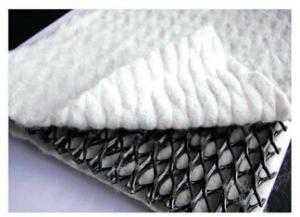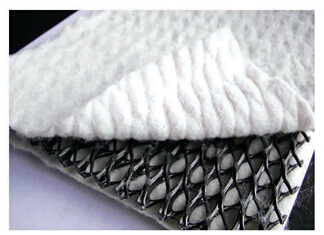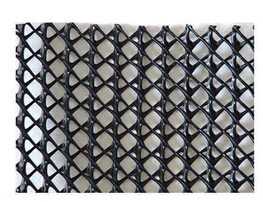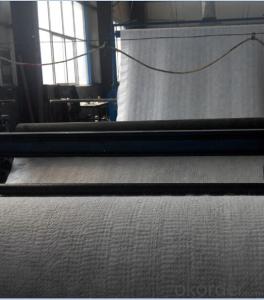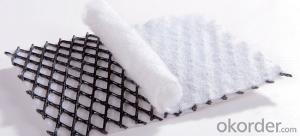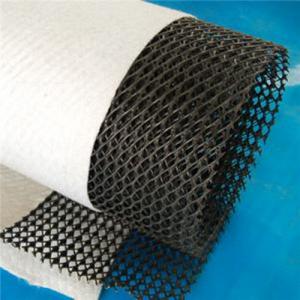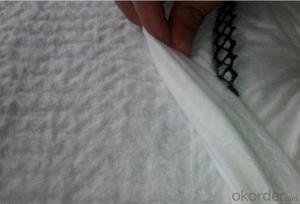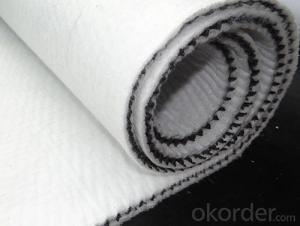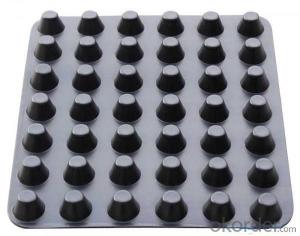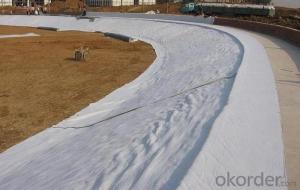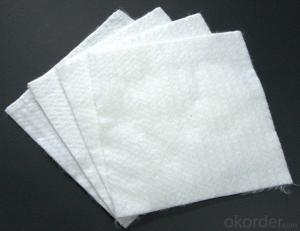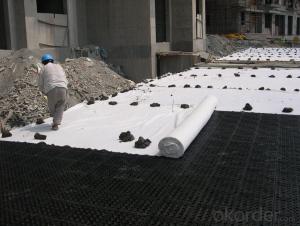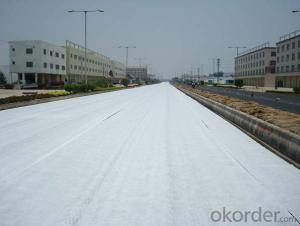Geotextile Filtration Fabric Tri-Dimensional Composite Geonet for Drainage in Road, Railway, Highway, and Tunnel Applications
- Loading Port:
- Tianjin
- Payment Terms:
- TT OR LC
- Min Order Qty:
- -
- Supply Capability:
- 5000rolls m²/month
OKorder Service Pledge
OKorder Financial Service
You Might Also Like
Tri-Dimension Composite Geonet for Drainage 1 for Road Railway Highway Tunnel
It is made of HDPE polymer by extruding into a tri-dimension structure net. Net shape.
Specification of Tri-Dimension Composite Geonet for Drainage 1 for Road Railway Highway Tunnel
Net thickness: 5mm - 8mm, width: 2m - 4m, length as request.
Property of Tri-Dimension Composite Geonet for Drainage 1 for Road Railway Highway Tunnel
I. High drainage property, can bear long time high pressu re
2. High tensile strength and shear strength
3. Reduce probability of geotextile penetration into net to keep high hydraulic conductivity
Application of Tri-Dimension Composite Geonet for Drainage 1 for Road Railway Highway Tunnel
Drainage in landfill, roadbed and road surface, railway, tunnel, underground, retaining wall back
Garden and playground.
Production standard of Tri-Dimension Composite Geonet for Drainage 1 for Road Railway Highway Tunnel
GB/T19470-2004
- Q: Are geotextiles effective in preventing soil contamination?
- Yes, geotextiles are effective in preventing soil contamination. They act as a barrier between the soil and potential contaminants, such as chemicals or pollutants, preventing them from leaching into the soil. Geotextiles also help in stabilizing the soil, reducing erosion, and promoting proper drainage. Overall, they play a crucial role in protecting soil quality and preventing contamination.
- Q: How do geotextiles improve the performance of geosynthetic clay liners?
- Geotextiles improve the performance of geosynthetic clay liners by providing additional reinforcement and filtration capabilities. They act as a separation layer between the clay liner and other materials, preventing the mixing of different soil layers and enhancing the liner's stability. Geotextiles also enhance the liner's filtration properties, allowing water to pass through while preventing the migration of fine particles. This improves the overall performance and longevity of geosynthetic clay liners in various engineering and environmental applications.
- Q: How do geotextiles contribute to soil improvement in soft ground areas?
- Geotextiles contribute to soil improvement in soft ground areas by providing reinforcement, stabilization, and separation functions. They act as a barrier between the soil layers, preventing mixing and promoting drainage. Geotextiles also distribute loads more evenly, reducing the risk of soil settlement and increasing the overall stability of the ground. Additionally, these materials can help control erosion by effectively retaining soil particles while allowing water to pass through, minimizing surface runoff and maintaining the integrity of the soil.
- Q: Geotextile, one ton, replaced by a square meter how much money formula
- First look at how many grams of cloth, and then in addition to the number of square feet on how much money and then divided by the square to know how much money a square I plant geotextile
- Q: Geotextile GB and Dahua What is the difference between looking at almost ah
- GB is the current national industry standards, Dahua is from the raw materials to distinguish, Huazhi geotextile material manufacturers
- Q: Geotextile is what material to do
- In accordance with the manufacturing method is divided into: there are two types of textile and non-woven geotextile, varieties of filament and short wire, the main raw material is more polyester filament.
- Q: Can geotextiles be used for shoreline protection?
- Yes, geotextiles can be used for shoreline protection. They are commonly used to stabilize coastal areas and prevent erosion by acting as a barrier against wave action and water currents. Geotextiles help to retain sediment and provide structural support, making them an effective solution for shoreline protection projects.
- Q: What are the different testing methods for geotextiles?
- There are several testing methods for geotextiles, including tensile strength testing, puncture resistance testing, tear resistance testing, elongation testing, and permeability testing. These methods help assess the performance and quality of geotextiles in various applications, such as soil stabilization, erosion control, and drainage systems.
- Q: What are the different geotextile durability testing standards?
- There are several different geotextile durability testing standards, including ASTM D4355, ISO 12956, and ISO 12236. These standards evaluate the durability and performance of geotextiles by subjecting them to various mechanical, chemical, and environmental tests.
Send your message to us
Geotextile Filtration Fabric Tri-Dimensional Composite Geonet for Drainage in Road, Railway, Highway, and Tunnel Applications
- Loading Port:
- Tianjin
- Payment Terms:
- TT OR LC
- Min Order Qty:
- -
- Supply Capability:
- 5000rolls m²/month
OKorder Service Pledge
OKorder Financial Service
Similar products
Hot products
Hot Searches
Related keywords
